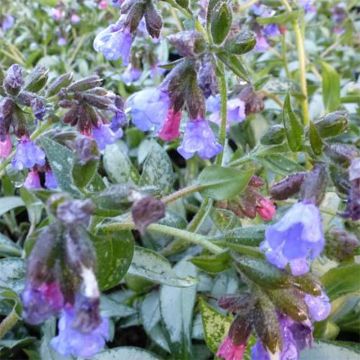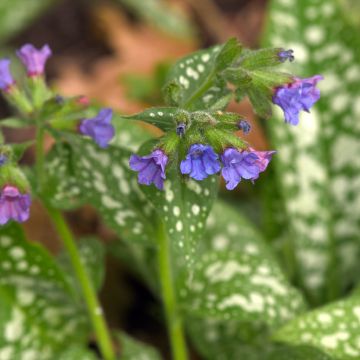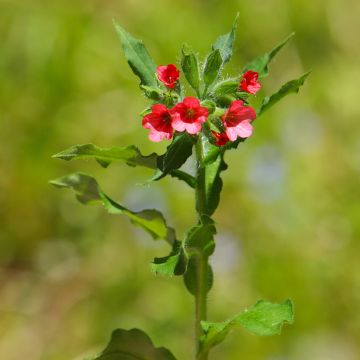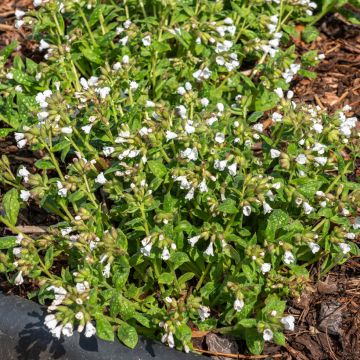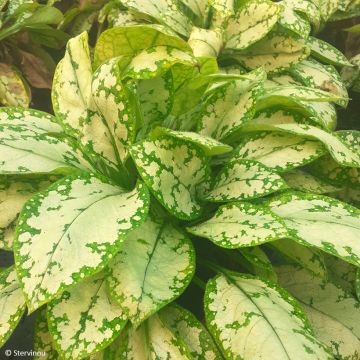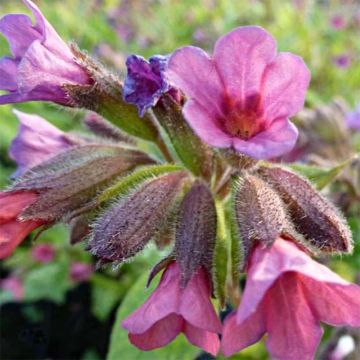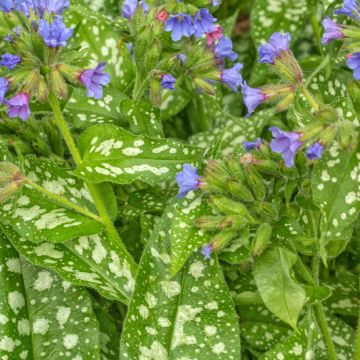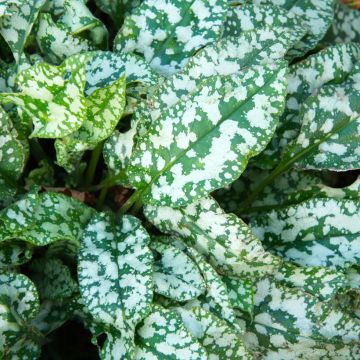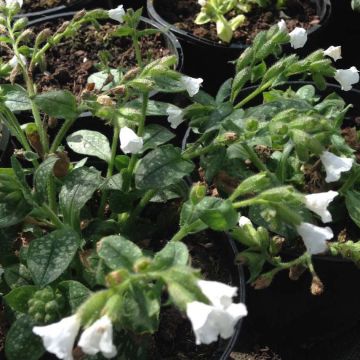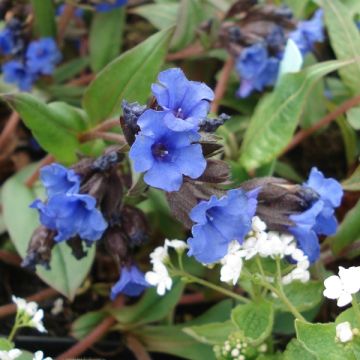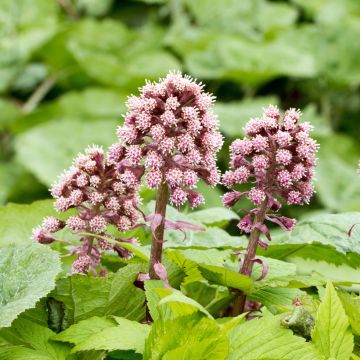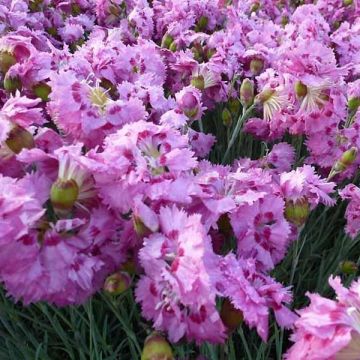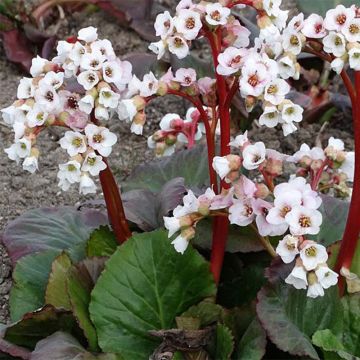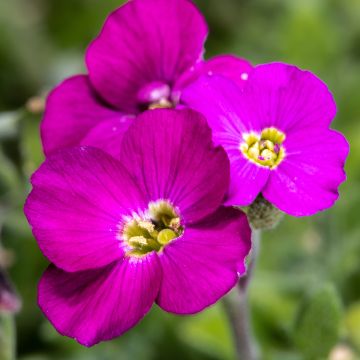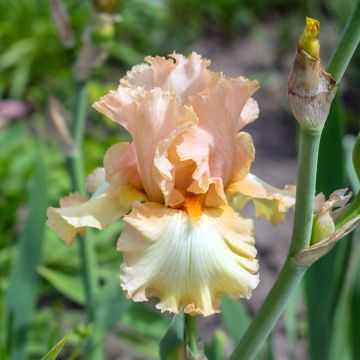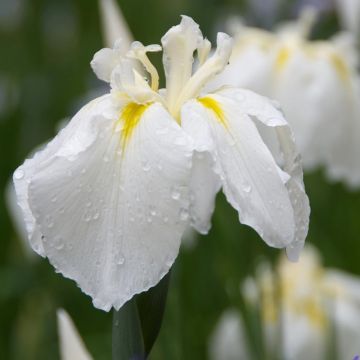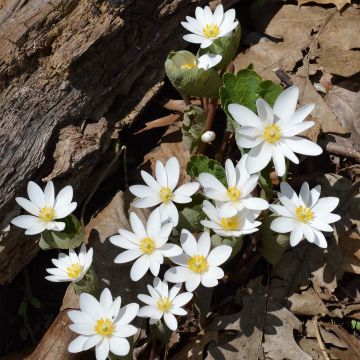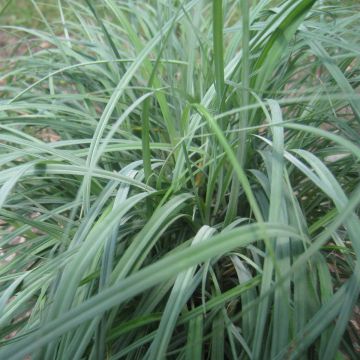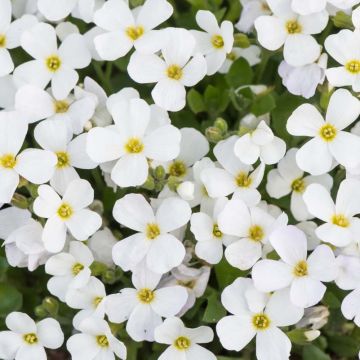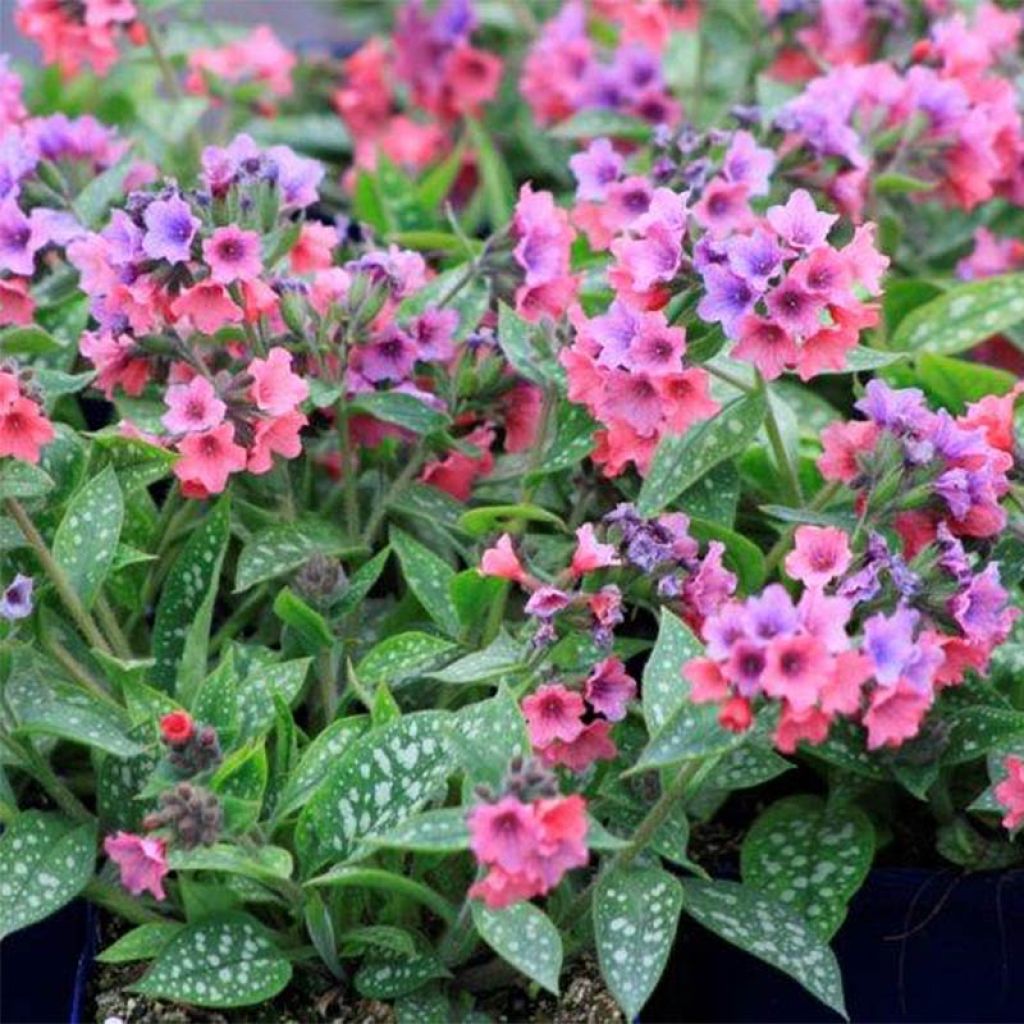

Pulmonaria Shrimps on the Barbie - Pulmonaire
Pulmonaria Shrimps on the Barbie - Lungwort
Pulmonaria Shrimps on the Barbie
Lungwort
This item cannot be shipped to the selected country
Delivery charge from €5.90
Delivery charge from €5.90
More information
Schedule delivery date,
and select date in basket
This plant carries a 12 months recovery warranty
More information
We guarantee the quality of our plants for a full growing cycle, and will replace at our expense any plant that fails to recover under normal climatic and planting conditions.
From €5.90 for pickup delivery and €6.90 for home delivery
Express home delivery from €8.90.
From €5.90 for pickup delivery and €6.90 for home delivery
Express home delivery from €8.90.

Does this plant fit my garden?
Set up your Plantfit profile →
Description
The Pulmonaria 'Shrimps on the Barbie' forms an effective full or semi-shade ground cover, which enlivens the undergrowth from the end of winter with its salmon-pink flowers. Its tender green foliage, semi-evergreen and abundantly marbled with silver, brings a graphic touch under bushes and trees, in a humus-rich soil, not too dry in summer and well-drained.
The pulmonaria 'Shrimps on the Barbie' belongs to the large family of Boraginaceae, which offers many shade or semi-shade ground covers such as small borage or comfrey. Pulmonarias are mostly plants of edges and undergrowth, in which they flourish very early, before the trees have leaves that prevent light from reaching the ground.
The variety 'Shrimps on the Barbie' forms a low clump about 25 cm (10in) high and 60 cm (24in) wide. Early, it illuminates the flower beds from March to June depending on the region with its charming bell-shaped flowers in a slightly salmon-pink colour gathered in clusters. This effect is enhanced by the wonderful association with the tender green foliage marbled with silver. The leaves, thick and covered with stiff hairs, are semi-evergreen, and are ignored by slugs as well as rabbits. This variety is also quite resistant to powdery mildew, a fungal disease that causes grey spots to appear on the leaves in dry weather.
The 'Shrimps on the Barbie' pulmonaria will look beautiful in the undergrowth, at the foot of bushes or trees (with not too competitive roots, however). It will thrive in a rather humus-rich soil, where it can slowly spread through short surface rhizomes. The soil may occasionally dry out once the clump is well rooted. Do not hesitate to divide it regularly to accelerate its propagation. You will thus obtain a very bright ground cover. It is also possible to use it to garnish the edge of a shaded alley, or to brighten up the base of a wall.
It can be advantageously associated with other early blooms, such as the narcissus 'Katie Heath', salmon-orange, the Brunnera 'Mr Morse', the Chionodoxa luciliae 'Glory of the Snow' etc. It can also be paired with other undergrowth plants such as the nodding cranesbill 'Clos du Coudray', or the lady fern 'Lady in Red'.
Report an error about the product description
Pulmonaria Shrimps on the Barbie - Lungwort in pictures
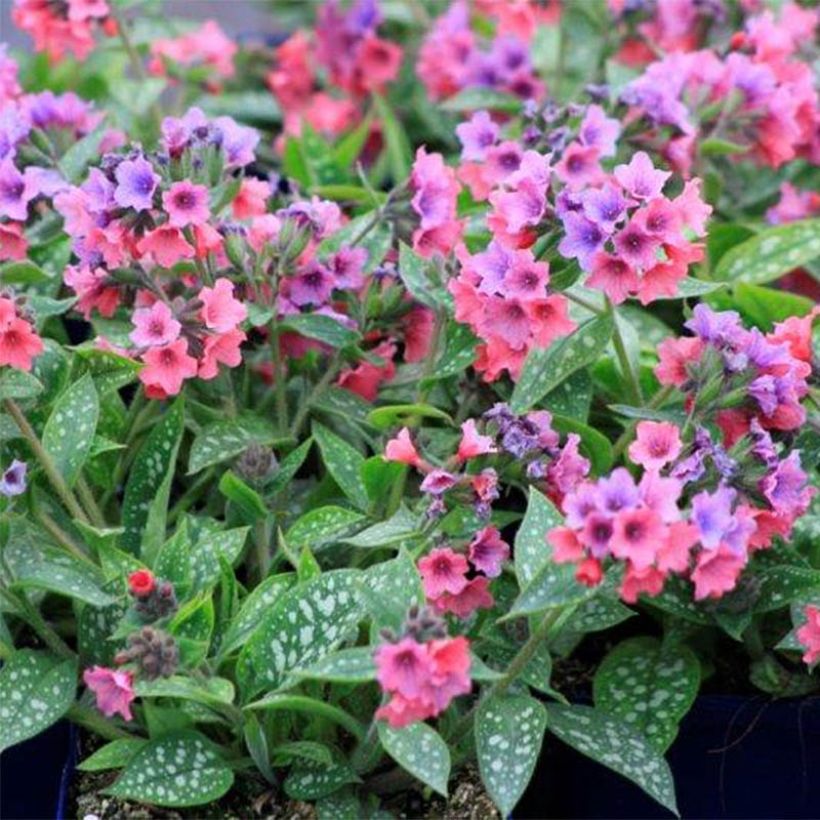

Flowering
Foliage
Plant habit
Botanical data
Pulmonaria
Shrimps on the Barbie
Boraginaceae
Lungwort
Cultivar or hybrid
Other Pulmonaria - Lungwort
Planting and care
Pulmonarias are good perennial plants for cool climates, as they fear heat and drought which make them susceptible to fungal diseases. They are very hardy and love leafy undergrowth where they find the necessary spring moisture for their good development, and as they bloom early, sufficient light before the trees have their leaves. They are not afraid of limestone and they all love a fresh humus-rich but well-drained soil, which is often the case in a clear undergrowth, where the humus of dead leaves nourishes them and the tree roots drain excess water. That being said, they also accept a shady situation on the edge of a flower bed, and manage to grow in heavy and clayey soils.
Planting period
Intended location
Care
-
, onOrder confirmed
Reply from on Promesse de fleurs
Spring flowering perennials
Haven't found what you were looking for?
Hardiness is the lowest winter temperature a plant can endure without suffering serious damage or even dying. However, hardiness is affected by location (a sheltered area, such as a patio), protection (winter cover) and soil type (hardiness is improved by well-drained soil).

Photo Sharing Terms & Conditions
In order to encourage gardeners to interact and share their experiences, Promesse de fleurs offers various media enabling content to be uploaded onto its Site - in particular via the ‘Photo sharing’ module.
The User agrees to refrain from:
- Posting any content that is illegal, prejudicial, insulting, racist, inciteful to hatred, revisionist, contrary to public decency, that infringes on privacy or on the privacy rights of third parties, in particular the publicity rights of persons and goods, intellectual property rights, or the right to privacy.
- Submitting content on behalf of a third party;
- Impersonate the identity of a third party and/or publish any personal information about a third party;
In general, the User undertakes to refrain from any unethical behaviour.
All Content (in particular text, comments, files, images, photos, videos, creative works, etc.), which may be subject to property or intellectual property rights, image or other private rights, shall remain the property of the User, subject to the limited rights granted by the terms of the licence granted by Promesse de fleurs as stated below. Users are at liberty to publish or not to publish such Content on the Site, notably via the ‘Photo Sharing’ facility, and accept that this Content shall be made public and freely accessible, notably on the Internet.
Users further acknowledge, undertake to have ,and guarantee that they hold all necessary rights and permissions to publish such material on the Site, in particular with regard to the legislation in force pertaining to any privacy, property, intellectual property, image, or contractual rights, or rights of any other nature. By publishing such Content on the Site, Users acknowledge accepting full liability as publishers of the Content within the meaning of the law, and grant Promesse de fleurs, free of charge, an inclusive, worldwide licence for the said Content for the entire duration of its publication, including all reproduction, representation, up/downloading, displaying, performing, transmission, and storage rights.
Users also grant permission for their name to be linked to the Content and accept that this link may not always be made available.
By engaging in posting material, Users consent to their Content becoming automatically accessible on the Internet, in particular on other sites and/or blogs and/or web pages of the Promesse de fleurs site, including in particular social pages and the Promesse de fleurs catalogue.
Users may secure the removal of entrusted content free of charge by issuing a simple request via our contact form.
The flowering period indicated on our website applies to countries and regions located in USDA zone 8 (France, the United Kingdom, Ireland, the Netherlands, etc.)
It will vary according to where you live:
- In zones 9 to 10 (Italy, Spain, Greece, etc.), flowering will occur about 2 to 4 weeks earlier.
- In zones 6 to 7 (Germany, Poland, Slovenia, and lower mountainous regions), flowering will be delayed by 2 to 3 weeks.
- In zone 5 (Central Europe, Scandinavia), blooming will be delayed by 3 to 5 weeks.
In temperate climates, pruning of spring-flowering shrubs (forsythia, spireas, etc.) should be done just after flowering.
Pruning of summer-flowering shrubs (Indian Lilac, Perovskia, etc.) can be done in winter or spring.
In cold regions as well as with frost-sensitive plants, avoid pruning too early when severe frosts may still occur.
The planting period indicated on our website applies to countries and regions located in USDA zone 8 (France, United Kingdom, Ireland, Netherlands).
It will vary according to where you live:
- In Mediterranean zones (Marseille, Madrid, Milan, etc.), autumn and winter are the best planting periods.
- In continental zones (Strasbourg, Munich, Vienna, etc.), delay planting by 2 to 3 weeks in spring and bring it forward by 2 to 4 weeks in autumn.
- In mountainous regions (the Alps, Pyrenees, Carpathians, etc.), it is best to plant in late spring (May-June) or late summer (August-September).
The harvesting period indicated on our website applies to countries and regions in USDA zone 8 (France, England, Ireland, the Netherlands).
In colder areas (Scandinavia, Poland, Austria...) fruit and vegetable harvests are likely to be delayed by 3-4 weeks.
In warmer areas (Italy, Spain, Greece, etc.), harvesting will probably take place earlier, depending on weather conditions.
The sowing periods indicated on our website apply to countries and regions within USDA Zone 8 (France, UK, Ireland, Netherlands).
In colder areas (Scandinavia, Poland, Austria...), delay any outdoor sowing by 3-4 weeks, or sow under glass.
In warmer climes (Italy, Spain, Greece, etc.), bring outdoor sowing forward by a few weeks.

































